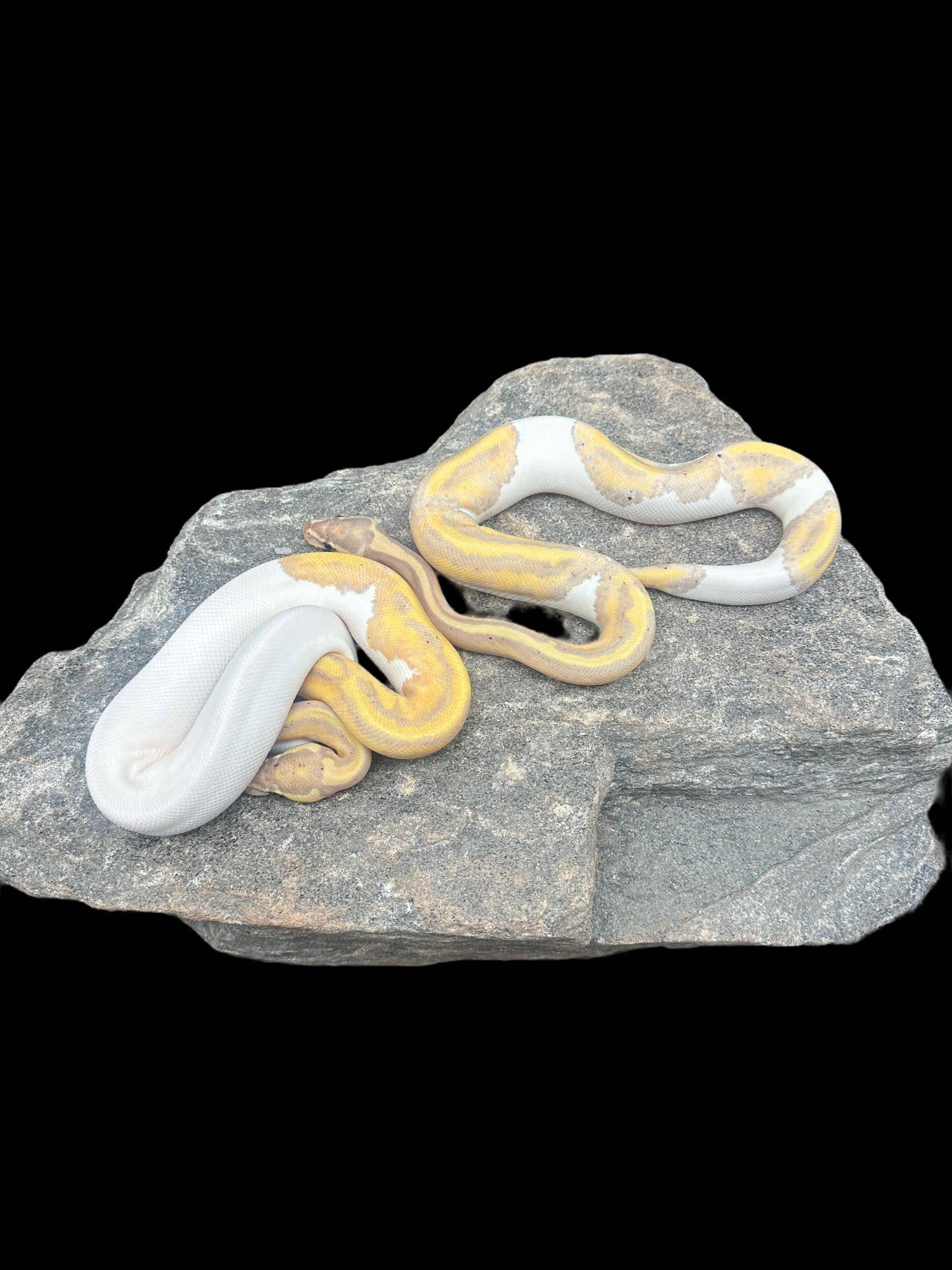Photo Disclaimer
Description
Ball Python (Banana Pied)
Python regius
Common Names: Ball Python, Royal Python
Species Overview
-
Size: Adults average 3–5 feet (0.9–1.5 m), with females generally larger and heavier-bodied than males. Some females may occasionally reach 6 feet.
-
Appearance: The Banana Pied combines two visually powerful morphs:
-
Banana produces a golden-yellow base with lavender undertones and dark speckling that develops over time.
-
Piebald introduces bold, irregular white patches across the body, broken up by patterned “islands” of colour.
Together, these traits create a high-contrast snake with vibrant yellows and purples set against clean white piebald sections. Each individual’s pattern is unique, with some being high-white (mostly white with small patches) and others low-white (mostly coloured with small white patches).
-
-
Distribution: Native to West and Central Africa, where wild-type ball pythons live in savannahs, grasslands, and agricultural zones.
-
Habitat: Found in savannahs and farmlands, often in rodent burrows or other underground retreats.
-
Behaviour: A nocturnal ambush predator, feeding mainly on small mammals and birds.
Captive Care
-
Enclosure: A 40-gallon breeder (36” × 18” × 18”) or similar enclosure is suitable for most adults. Provide at least two hides (warm and cool), climbing enrichment, and a water dish large enough for soaking.
-
Temperature & Humidity: Keep a gradient of 78–82°F (25–28°C) with a basking area of 88–92°F (31–33°C). Nighttime drops to 72–75°F (22–24°C) are acceptable. Humidity should remain around 50–60%, with a humid hide offered during shed cycles.
-
Diet: Juveniles eat hopper mice or rat pups every 5–7 days; adults are typically fed medium rats every 10–14 days. Prey should be proportionate to the snake’s girth.
-
Behaviour in Captivity: Ball pythons are docile, slow-moving, and tolerant of handling, making them one of the most popular snakes in captivity.
-
Special Considerations: While morphs change appearance dramatically, husbandry needs are the same as for wild-type ball pythons.
Genetics Note
-
Banana (Co-Dominant): Produces yellow-to-golden coloration with lavender contrast and dark speckling as the snake matures.
-
Piebald (Recessive): Creates irregular, unpigmented white patches across the body. Requires two copies of the gene to be visually expressed.
-
Banana Pied: The combination yields a visually striking snake with vibrant colouration broken by dramatic white patches, with pattern placement unique to each individual.

